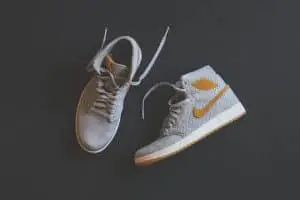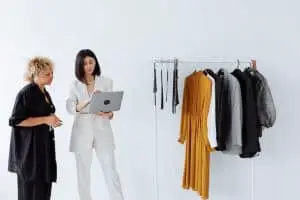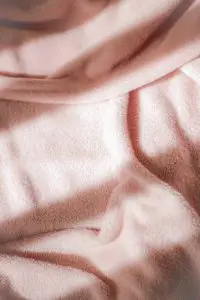If you solely desire to work in and succeed in the fashion industry, experience is everything. It doesn’t always take a bachelor’s degree to get ahead, but understanding the industry makes all the difference. There are many alternative options to becoming skilled in this field. Today I will be providing information on how you can start your journey in studying fashion design!
Become familiar with design software
Today’s modern fashion designers use design (CAD) software to capture their ideas. Two popular design programs for this line of work are Adobe Photoshop and Illustrator. Design software can be used to create digital fashion sketches, garment design, textiles, fashion illustrations, artwork, and other elements related to the design of apparel, footwear, and accessories. I encourage you to watch video tutorials in order to properly navigate the software and then spend time working with different design programs so that you can properly use it to its full extent.
Allow other designers to inspire you
Spend time researching other fashion designers, find some inspiration, and look at sketch ideas so that you may better understand the types of designs that are currently succeeding in the industry. A great way to develop a unique style while also discovering industry standards is to study the work of other designers. There are many types of fashion designers, including:
Create New Sketches Every Day
To be a successful fashion designer, you need to constantly create new designs, similar to writing, sometimes you will have designer’s block, but do not give up. When you first begin sketching, try to draw every day and produce new ideas regularly. Not all of your ideas will turn out perfect, but practicing can help you improve your skills and prepare a portfolio that exceeds expectations. In your sketchbook, include:
- Apparel
- Haute couture
- Ready-to-wear
- Mass market
- Footwear
- Accessory
- Sportswear
- Evening wear
- Childrenswear
- Limited edition
- Classic wear
- Eco-fashion
- Fabric swatches
- Ideas for garments
- Detailed comments
- Accessories
- Outfits
- Color palettes
Take time to look at the designs that you want to improve. Your audience is key, so sometimes revisions must be made based on your target consumer and their individual preferences.
Learn how to bring your design to life
Fashion design courses can be a great way to learn practical skills like pattern making, draping, fashion illustration, and the business side of fashion. As you work to bring your ideas to life, you will likely need to know how to sew and create a “prototype”. The best fashion designers have extensive knowledge about how they can later create the clothing they are designing. Some of these technical skills can be learned by reading books about pattern making, sewing techniques, stitching, etc. If you understand how clothes are made then you improve your creative thought and in turn design realistic pieces that look just as good as they do in the sketchbook.
Quiz yourself on fashion terms
Entering the fashion industry without a degree will not be an easy task. It is important that you understand the fashion language and educate yourself with the correct fashion terms. Learning fashion terms can be as easy as reading fashion magazines. Understanding how to speak about your design ideas with potential employers and clients, in the correct way will prove to be very effective. Knowing the proper terms will show experienced designers, fashion executives, and consumers that you are serious about a career in fashion.
Practice making prototype pieces
As you become confident in your designs, you can then begin creating your patterns and prototypes for your clothing. To properly do this, I would suggest that you:
- Size your samples
- Understand the body measurements of the sample size
- Create a flat sketch
- Determine initial dimensions and specifications
- Keep fabrics and garments organized
I would recommend purchasing an industrial sewing machine and other garment-making tools. Even if your prototypes are still a work in progress, they will be able to give you an idea about what the potential finished designs will look like. You can then use these prototypes in your future portfolio to represent your work as a designer, whether that be the style, voice, or aesthetic that makes you unique.
Attend fashion events
Attending fashion events is crucial to your success. Getting a job in the fashion industry becomes much easier when you learn to network. Meeting the right people and forming connections with fashion professionals could potentially open a new door for you. Attend fashion shows, conferences, gallery openings, and other events where you can expect to meet respected people in the industry. It is important to be present when you attend these events. Take it all in, yes. Make sure to introduce yourself to others and show engagement. Actively ask questions about work within the fashion industry. Showing genuine interest makes all the difference. This will benefit you in the future. Come prepared with business cards as well as examples of your work. They say it’s not about what you know but who you know. In this case, I am telling you it is both who and what you know.
Establish your own collection
A fashion collection is a curated series of garments and accessories that customers can wear together, in other words, they have a theme. Yours may consist of traditional pieces, or even a single product available in multiple colorways. Once you’re confident in constructing your own clothes, developing your own collection is a fantastic way to introduce yourself to the world of fashion. Your clothes speak for you as a designer. What do you want it to say? Don’t forget to come up with an artist’s statement. An artist statement is a not-too-long series of sentences that describe what you make and why you make it. By doing this you can successfully discuss your work with potential employers. For help with writing an artist’s statement, follow this link.
Take high-quality photographs of your work
When you are ready to share your designs with the world, take the time to take or have high-resolution photographs taken so that you can post them online and/or include them in your design portfolio. This portfolio should include images of your initial sketches and your finished work in order to provide information on the journey from idea to product. If you have a professional portfolio with zestful photographs will be essential in getting the attention of other designers, employers, and fashion brands. As I mentioned earlier, it might be a good idea to have someone take these photos for you, especially if you don’t have a good camera. Professional photographers can take pictures of your clothing, both on the rack and on models.
Build an online presence
Create a web portfolio and social media pages where you can share your designs. This gives potential employers a simple way to view your work and determine if you have the skills to succeed with their brand. Your online presence should appeal to both industry professionals and casual fans who might be interested in wearing your clothes. If you can show employers that there’s already a demand for your designs by building an online following, you can increase your chances of getting your first official job offer for a full-time fashion design role.
Get your clothes to influencers and models
You’re probably wondering how to get your clothes into the right hands. Sending out free samples of your designs to public figures is a great way to develop name recognition as a designer. The celebrities and influencers you want to engage will have their own social media accounts, but the best way to get in touch is through their agent. You can normally find contact details on their official website, or there are also platforms such as The Media Eye that you can pay for, or get a free trial. Having other people wear your designs shows potential employers that you have an established fan base, as well as creates publicity for your brand. When reaching out to influencers, models, and celebs to ask them to wear or promote your clothing, keep in mind the type of fashion brands you ultimately want to work for. If you can get in touch with influencers who align with your target audience then you are one step closer to success.
Send pitches to potential employers
Finally, once you have established design experience, knowledge of the industry, a portfolio and build connections, you can then start sending out pitches to potential employers. When you decide to share your portfolio it is so so so important to include a statement describing how YOUR designs would advance THEIR brand vision. It is a long road so do not give up. It might require you to send out many pitches before ever hearing back from a potential employer. My best advice for you is to stay motivated and pursue new opportunities by taking advantage of your growing network, work hard to continuously improve your designs, seek advice from professionals and others involved in the industry and take the time to find yourself in your work. If you’re still feeling overwhelmed or nervous to start this journey, let me remind you of some of the biggest names in fashion design, who never got fashion degrees…
- Coco Chanel
- Karl Lagerfeld
- Miuccia Prada
- Donatella Versace
- Manolo Blahnik
- Pierre Cardin
- Giorgio Armani
- Jean Paul Gaultier
- Nicolas Ghesquière
- Vivienne Westwood
- Thierry Mugler
- Vera Wang
- Raf Simons
- Virgil Abloh
I wish you the best of luck on your journey. Stay positive.
If you’d like to read up more about fashion design, here’s a book we recommend for you to get started: Fashion Design Course: Principles, Practice, and Techniques: The Practical Guide for Aspiring Fashion Designers
Moreover, don’t hesitate to explore our blog, where we’re providing a wealth of content on iconic fashion brands. Enjoy!







